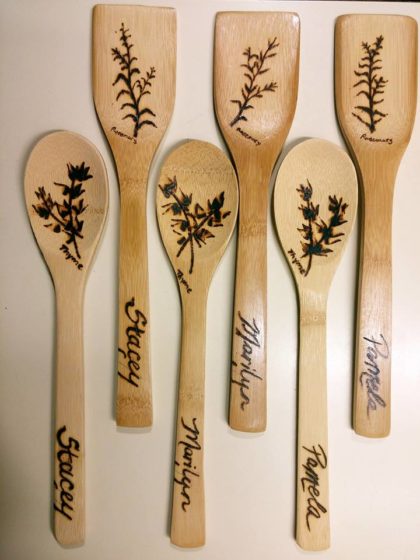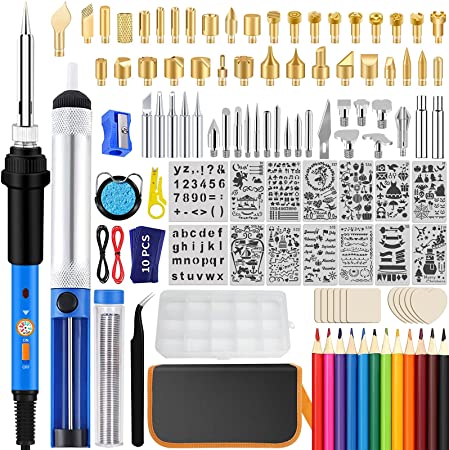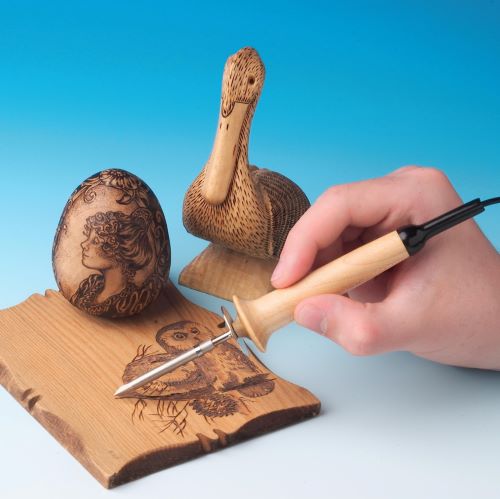
If you want to add color and detail to your wood burning, you must learn to create a shading point. There are three types of wood-burning points: cone, flow, and shading. Each type has its own purposes. The cone points are used for fine details and small dots. The shading points are a great choice for filling large areas in dark shades. The flow point and mini flow points are great for making large dots. While the shading point is perfect for creating small dots and curves, the shading point works well for smaller dots. Another type is the texture 'ntone point. This is useful for making fine lines with just one stroke.
Creating a wood burning shading point
Before you start your first woodburning project, here are some things to know about creating a shade point. First, your shading should be smooth and even. Graduations in tonal tone should be gradual. To achieve subtle transitions between light and darkness, you should start with a flat spoon-shaped shading point. This woodburning exercise is simple and allows you practice multiple pyrographic methods.
An outlining tool is required to create a shading point. A universal pen tip, or a pointed tip, can be used to outline the design. It's similar to tracing with your pen. But, for darker lines, you'll need more pressure. Also, consider the angle at which your fire should be lit. You should set the angle at 60 degrees. Turn the wood a few times to ensure the best possible angle for burning.
To create a stippled effect
This technique is great for adding depth and interest in a design. Dotting is an art technique that dates back to the medieval era. It involves heating a steel bolt and branding the wood using it. For this purpose, a large-rounded tip wood burner is ideal. It is important to clean the tip after any accumulation of matter. If you are using soft wood, you can create an edge with a bevel that evokes natural beauty.
Scribbling is about creating continuous, small circles with a pentip. It is similar in concept to doodling. A wide range of pen tips are available for this purpose, so you can use any of them to create a stippled effect. Shader points produce a smooth and even burn. Shader points are great for creating shading and texture.
Wood Burning: Adding color

It takes careful planning to add color to wood burning. It is essential that the final product has a pleasing design. Anything with corners or sloppy edges will reflect on it. St. Thomas Aquinas says beauty is subjective and in the eyes of the beholder. The ancient Greeks did however come up with many design principles, including balance, repetition and proportion, contrast, unity and symmetry.
You can add color to your woodburning designs by first deciding what kind of background you want. You can use pencils, markers, watercolors, oil paints, or fabric dyes. If you are using pencils, ensure that transparent colors allow sepia colours to show through. Also, a white artist’s pencil can be used as a way to remove excess pigment. You can use several colors in the same composition to achieve the desired look.
Make a round tube
The pull-away method is used to make a round tube from wood burning. This technique allows you to vary the intensity of the colors from the edges to the middle of the object. To begin, place the object's outer edge and pull the tip towards the wood. It's a good idea to start from the outside, and then face the tip towards you.

Next is to add the bottom layer to your rounded tube. A footer is made of concrete. This allows you to build a tube with a rounded bottom. Also, it is important that the bottom layer is smooth. This is the easiest way to build a footer. Once you're done, you can remove concrete forms and finish the bottom of your wood burning stove.
FAQ
How do you calculate woodworking costs?
It is crucial to keep project costs as low-cost as possible. Make sure you're getting the best prices on materials. Also, consider all other factors that can affect the price of your projects such as skill level, experience, time and cost. If you want to get an idea of what you can expect to spend on different types of woodwork projects, check out our guide to the average price of common household DIY tasks.
What's the difference between plywood vs particle board?
Plywood is a combination of layers of wood, which are then pressed together under high pressure. Plywood can be cut to different thicknesses. It's commonly used as flooring and cabinets. Particle board consists of sawdust mixed and resin. The resin is then compressed into large blocks. This board is commonly used in home improvement projects. Both boards can be cut easily and are both durable.
How can I keep my shop organised?
Setting aside an area to store tools is the first step in keeping your workshop organized. You want your tools to stay clean and free from debris and dust. Hang tools and accessories using pegboard hooks.
Where can I buy hardwood lumber?
Home Depot can sell hardwood lumber. They offer a wide range of wood products including flooring, cabinets, furniture and more.
A wide range of engineered hardwoods are also available, such as Ipe and Brazilian Cherry (Pau d'Arco), Mahogany and Swietenia Macrophylla.
These woods are available online by searching Google for "hardwood lumber".
How do you know which type of wood you are working with?
Always verify the label on wood purchases. The label should contain information about the wood species, its moisture content, and whether it has been treated with preservatives.
Is there a way to start my own woodworking company?
It is not easy to start a woodworking business. You will need to adhere to many legal requirements. You don't have to go through all that hassle of setting it up. Many people opt to join existing businesses instead. This way, you only need to pay membership fees and taxes.
What type of wood should I choose?
The most popular types of wood used in woodworking include oak, pine, birch, maple, cherry, mahogany, teak, poplar, redwood, and bamboo. Each type of wood has unique characteristics that affect the look and feel of the final product. Oak is a darker wood and tends to be more durable than other types. Birch is lightweight and soft while mahogany is heavier and denser. You also have the option of solid wood or veneers. Veneers are thin wood sheets that are glued together to form one layer.
Statistics
- Average lumber prices rose about 600 percent between April 2020 and May 2021. (familyhandyman.com)
- If your lumber isn't as dry as you would like when you purchase it (over 22% in Glen Huey's opinion…probably over 10-15% in my opinion), then it's a good idea to let it acclimate to your workshop for a couple of weeks. (woodandshop.com)
- Overall employment of woodworkers is projected to grow 8 percent from 2020 to 2030, about as fast as the average for all occupations. (bls.gov)
- Woodworkers on the lower end of that spectrum, the bottom 10% to be exact, make roughly $24,000 a year, while the top 10% makes $108,000. (zippia.com)
External Links
How To
How to join wooden boards without using nails
Woodworking is a hobby that many people enjoy doing. Woodworking can be a fun hobby because you can work with your hands to make useful objects from wood. You may need to join two pieces without the use of nails. This article will demonstrate how to do so to preserve the beauty of your woodwork.
Before you can join the wood pieces together, you need to remove any rough edges. Avoid leaving sharp edges that could lead to problems later. Once you have done that, you can begin gluing your boards together.
If you are working with hardwood, only one side should be glue. You should glue both sides if you are working with softwoods such as pine and cedar. After applying the glue, press the boards firmly until they are completely stuck together. Before moving onto the next step, make sure the glue has dried completely.
After you glue your boards together, drill holes at the joints where screws will be inserted. Depending on what type screw you choose, the size of these holes will depend on how big they are. For example, if you intend to use 1/2-inch wood screws, you need to drill a hole that is at most 3/4 inches deep.
Once you've drilled your holes, you'll want to drive the screws through the joint and into the backside of the board. Do not hit the boards' front surfaces. It will ruin the finish. Avoid hitting the screws' ends too often when driving screws. This will prevent the wood from splitting.
Once your project is complete, it's time to protect it against the elements. You have two options: seal the whole furniture piece or just the top. Either way, you'll want to use a product that will last for years to come. Some examples include oil-based varnishes, polyurethane, shellac, lacquer, etc.
You can find these products at most home improvement stores. It is important to ensure that you purchase the correct product for the job. Remember that some finishes can be toxic, so you should not use them indoors. Wear protective gear whenever you are handling them.